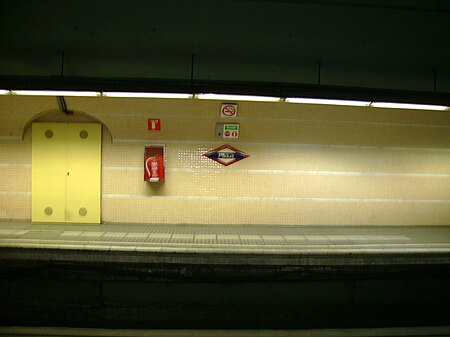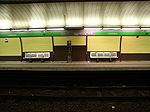Pàdua (Barcelona–Vallès Line)
Barcelona Metro line 7 stationsBarcelona Metro stubsCatalan railway station stubsRailway stations opened in 1953Transport in Sarrià-Sant Gervasi

Pàdua is a station of the Barcelona Metro on the FGC-operated line L7 (also known as Línia de Balmes). The station is situated under Carrer de Balmes.The station opened in 1953 with the opening of the line from Gràcia railway station to Avinguda Tibidabo.The station has twin tracks, with two 60 metres (200 ft) long side platforms.
Excerpt from the Wikipedia article Pàdua (Barcelona–Vallès Line) (License: CC BY-SA 3.0, Authors, Images).Pàdua (Barcelona–Vallès Line)
Carrer de Balmes, Barcelona
Geographical coordinates (GPS) Address Nearby Places Show on map
Geographical coordinates (GPS)
| Latitude | Longitude |
|---|---|
| N 41.403333333333 ° | E 2.1427777777778 ° |
Address
Carrer de Balmes 341
08006 Barcelona (Sarrià - Sant Gervasi)
Catalonia, Spain
Open on Google Maps











